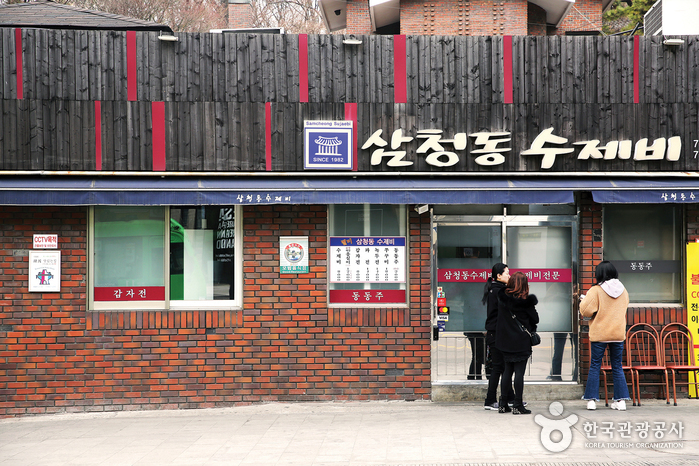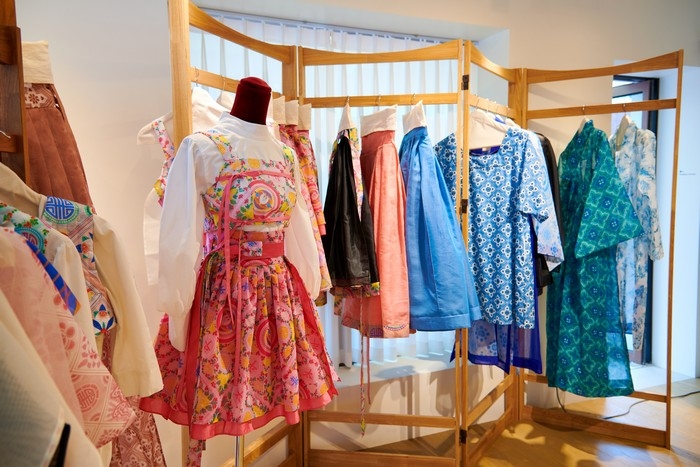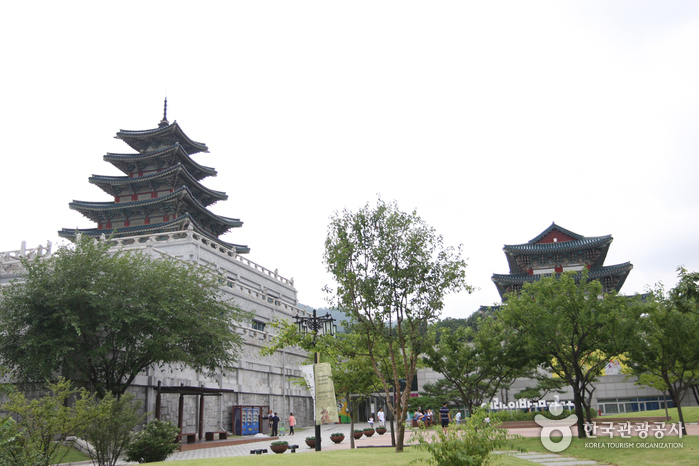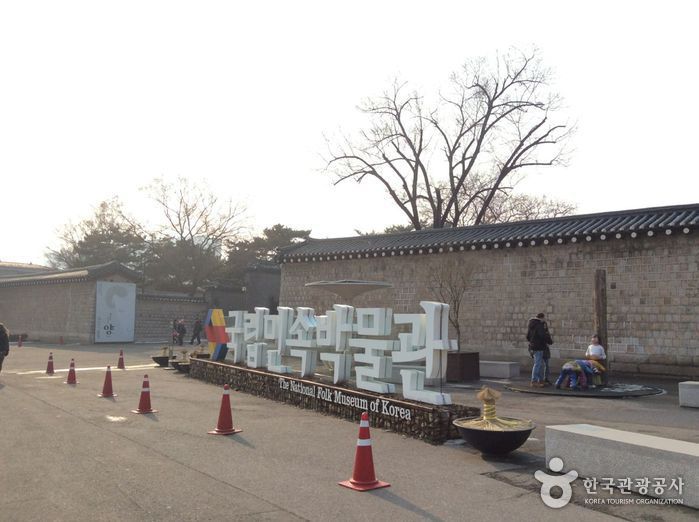Medical Avenue ((주)메디컬애비뉴)
12.6Km 2025-07-29
(#1433, Mapo T Town), 144 Mapo-daero, Mapo-gu, Seoul
Since its inception in 2014, Medical Avenue has been a leading medical agency, providing world-class healthcare services in Korea to patients from around the globe. Our deep understanding of patients' cultural backgrounds and the Korean medical system allows us to minimize language and cultural barriers through the support of professional interpreters and multicultural coordinators. This dedication has resulted in over 5,000 patients receiving stable treatment with a satisfaction rate that boasts over 98% returning patients. Medical Avenue is committed to ensuring that patients receive comfortable and trustworthy care, continually striving to deliver the best medical services available.
Samcheong Sujaebi (삼청동수제비)
12.6Km 2024-03-04
101-1 Samcheong-ro, Jongno-gu, Seoul
+82-2-735-2965
Samcheong Sujaebi is a handmade sujebi (hand-pulled dough soup) specialty restaurant located in Samcheong-dong. Sujebi is a dish made by tearing hand-pulled dough into pieces and boiling it in anchovy broth, among other broths. The signature menu features sujebi with sliced pumpkin, clams, and potatoes, all boiled together and served in a pot. Another specialty is the potato pancake made exclusively from 100% potatoes. Nearby attractions include Bukchon Hanok Village, the National Museum of Modern and Contemporary Art, and Gyeongbokgung Palace.
Olive Young - AVENUE FRANCE Pangyo Branch [Tax Refund Shop] (올리브영 판교아브뉴프랑)
12.6Km 2024-04-22
25, Dongpangyo-ro 177beon-gil, Bundang-gu, Seongnam-si, Gyeonggi-do
-
Danha(단하)
12.6Km 2024-11-05
39-7 Palpan-gil, Jongno-gu, Seoul
BLACKPINK's “HOW YOU LIKE THAT” music video created a sensation, reaching 100 million views within 32 hours of its release. The most noteworthy part of the music video was the hanbok they wore. Danha, which was in charge of making the costumes, improved the traditional hanbok and completely recreated it as a stage costume, garnering attention from all over the world. Danha is famous for designing hanboks using traditional patterns. The patterns engraved on the clothes in the BLACKPINK music video used the phoenix design pattern of the royal cloth. Danha's hanbok can be purchased through the online shop, and if you want to have it custom-made, you can visit Danha Maison after making a reservation.
Himart - Sangdo Branch [Tax Refund Shop] (하이마트 상도점)
12.6Km 2024-04-22
237, Sangdo-ro, Dongjak-gu, Seoul
-
The National Folk Museum's Korean Folk Performances for Visitors (국립민속박물관 우리민속한마당)
12.6Km 2021-07-07
37, Samcheong-ro, Jongno-gu, Seoul
• 1330 Travel Hotline: +82-2-1330 (Korean, English, Japanese, Chinese) • For more info: +82-2-3704-3114
The National Folk Museum is the leading museum depicting Korean folk culture that attracts 3 million visitors every year. Every Saturday, the museum offers free performances where Korean music, traditional dance, martial arts, and mask plays are performed for Korean and international spectators to illustrate Korea’s major seasonal events, special exhibitions, and traditional intangible cultures.
Kumkang Optical - Hyundai Pangyo Branch [Tax Refund Shop] (금강안경 현대판교 [사후면세점])
12.6Km 2024-04-19
8F Hyundai Department Store Pangyo Branch, 180, Pangyoyeok-ro, Bundang-gu, Seongnam-si, Gyeonggi-do
-
Gucci - Hyundai Pangyo Branch [Tax Refund Shop] (구찌 현대 판교점)
12.6Km 2024-04-23
1F, 180, Pangyoyeok-ro, Bundang-gu, Seongnam-si, Gyeonggi-do
-
National Folk Museum of Korea (국립민속박물관)
12.6Km 2019-03-19
37, Samcheong-ro, Jongno-gu, Seoul
Located inside Gyeongbokgung Palace, the National Folk Museum of Korea presents historical artifacts that were used in the daily lives of Korean people in the past. Through the displays, visitors can learn about the domestic and agricultural lifestyles, as well as Korea’s cultural beliefs.
The National Folk Museum of Korea has three permanent exhibitions and two special exhibitions as well as a library, souvenir shop, and other subsidiary facilities.
National Folk Museum of Korea Children’s Museum (국립민속박물관 어린이박물관)
12.6Km 2019-03-18
37, Samcheong-ro, Jongno-gu, Seoul
+82-2-3704-4540, 4524
The Children’s Museum is a hands-on experience museum run by the National Folk Museum of Korea. A variety of visual aids and assembly models allow children to touch and feel pieces and experience folk history in an interactive way. The theme of the exhibitions consists of folk clothing, food, shelter, social life, and entertainment. The museum has a number of interactive spaces including a table set for an ancestral ritual, magnet miniatures depicting a baby’s first birthday, and an area where young visitors can build a folk house. Young learners can also create an avatar wearing in Hanbok, make kimchi using visual aids, or play gonu (a traditional board game). The museum also collects, preserves, and maintains relics and historical items related to youth and youth culture.


![Olive Young - AVENUE FRANCE Pangyo Branch [Tax Refund Shop] (올리브영 판교아브뉴프랑)](http://tong.visitkorea.or.kr/cms/resource/53/2881653_image2_1.jpg)

![Himart - Sangdo Branch [Tax Refund Shop] (하이마트 상도점)](http://tong.visitkorea.or.kr/cms/resource/19/2880019_image2_1.jpg)
![Kumkang Optical - Hyundai Pangyo Branch [Tax Refund Shop] (금강안경 현대판교 [사후면세점])](http://tong.visitkorea.or.kr/cms/resource/51/2881651_image2_1.jpg)
![Gucci - Hyundai Pangyo Branch [Tax Refund Shop] (구찌 현대 판교점)](http://tong.visitkorea.or.kr/cms/resource/89/2881689_image2_1.jpg)


 English
English
 한국어
한국어 日本語
日本語 中文(简体)
中文(简体) Deutsch
Deutsch Français
Français Español
Español Русский
Русский